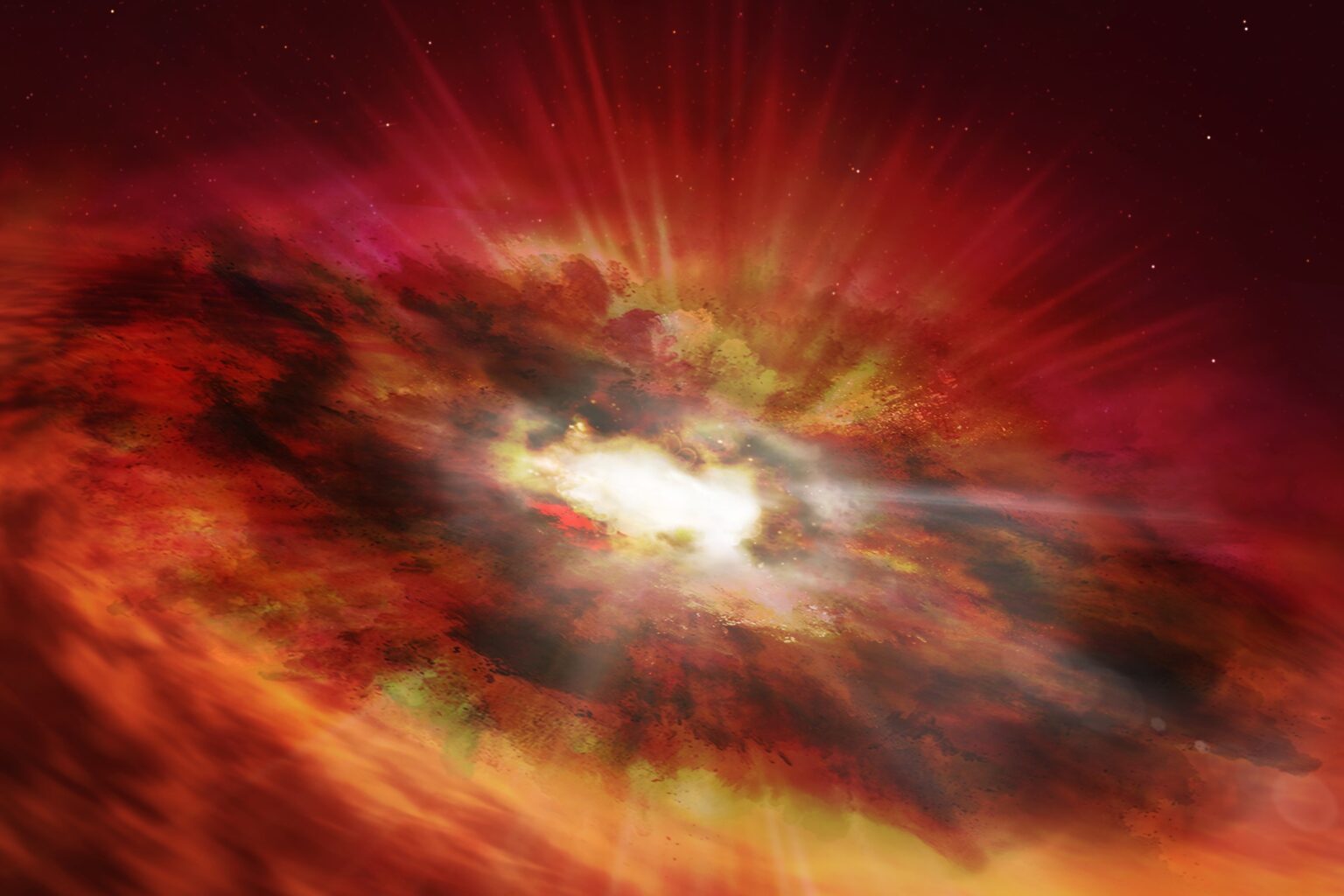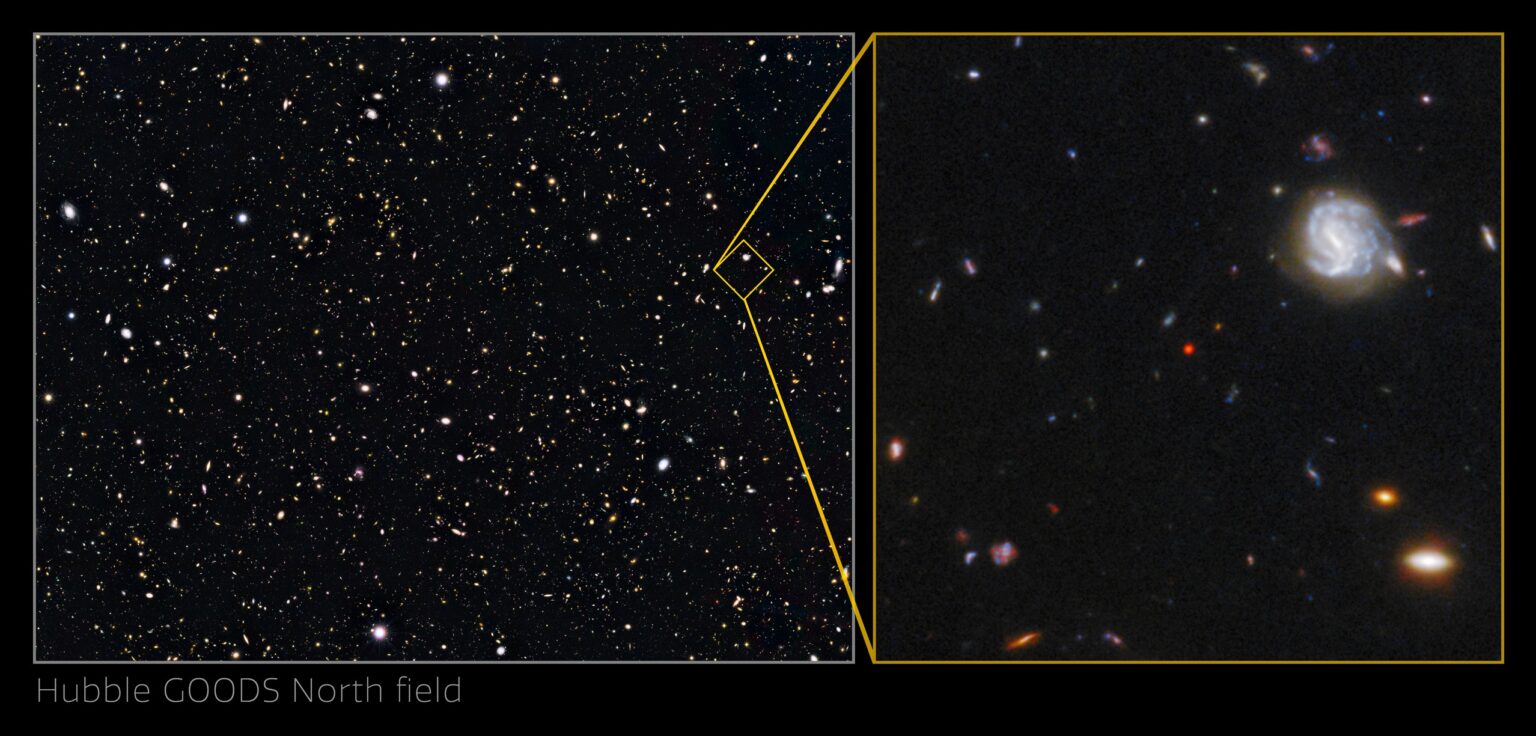Astronomers using the Hubble telescope have discovered a fast-growing supermassive black hole in the early Universe. It is considered an important missing link between young star-forming galaxies and the first supermassive black holes. Until now, the “space monster” nicknamed GNz7q has been hiding unnoticed in one of the most studied areas of the night sky. This area is called the Great Observatories Origins Deep Survey-North (GOODS-North) field.

Hubble’s archived data, obtained with the Advanced Camera for Surveys, helped the team determine that GNz7q existed as early as 750 million years after the Big Bang. Thus, it is one of the oldest black holes in the Universe with a redshift of 7.6. At the same time, GNz7q is fast-growing. Theories and computer simulations have predicted fast-growing black holes in dusty galaxies with early star formation, but so far they have not been observed.

“GNz7q is the first example of a fast-growing black hole in the dusty core of a galaxy in the era of star formation. It is also the earliest supermassive black hole known in the Universe,” explained Seiji Fujimoto, an astronomer at the Niels Bohr Institute for Astronomy, Physics and Geophysics in Copenhagen.
Mystery of modern astronomy
One of the outstanding mysteries of modern astronomy sounds like this: How did supermassive black holes, whose mass is millions or billions of times the mass of the Sun, become so huge and so fast?
Modern theories predict that supermassive black holes begin their lives in the dust-shrouded cores of galaxies with active star formation. Then they begin to absorb the gas and dust surrounding them, which turns them into extremely bright quasars. Although these dusty galaxies with flares of star formation and luminous quasars are extremely rare, they were discovered in the early Universe.
GNz7q may be the missing link between these two classes of objects. This black hole has both aspects of a dusty galaxy with active star formation and a quasar. Also, GNz7q lacks various features that are usually observed in typical, very bright quasars corresponding to the radiation of the accretion disk of a supermassive black hole. Most likely, this is due to the central black hole in GN7q is young. These properties perfectly coincide with the young quasar of the transition phase, which was predicted by the simulation.
According to NASA
Follow us on Twitter to get the most interesting space news in time
https://twitter.com/ust_magazine

